Farm-to-table. The term invokes a feeling of simpler times, when things were less complicated, less tampered with and more pure. Like similar labels in the same company––such as “organic” and “local”––farm-to-table has begun working its way into mainstream America. People want to feel connected to their food, and farm-to-table experiences bring you closer to that feeling. Especially when you’re hanging off the side of a mechanical harvester.
Feeling quite impressed with myself this morning, I grip my camera with one hand and use the other to secure myself to the towering machine slowly making its way over the tops of olive trees. I fire away at the olives pelting against the bin at high velocity, the sound adding to my personal soundtrack. The driver glances at me through the side mirror, probably checking to see if I’ve fallen off yet. The fruit I’m attempting to capture is beginning its path to becoming the award-winning, one hundred percent estate-grown, ENZO Organic Extra Virgin Olive Oil.
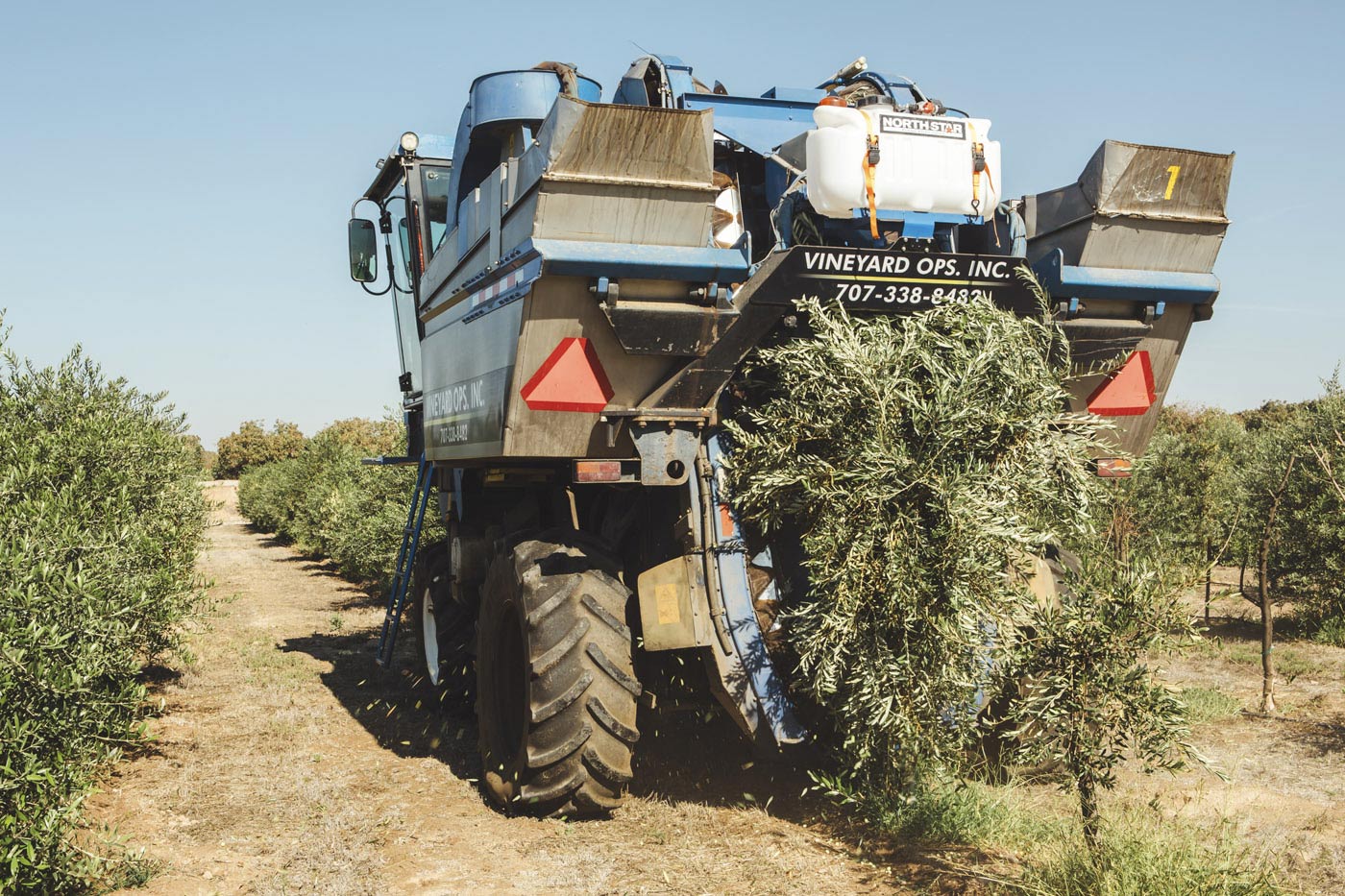
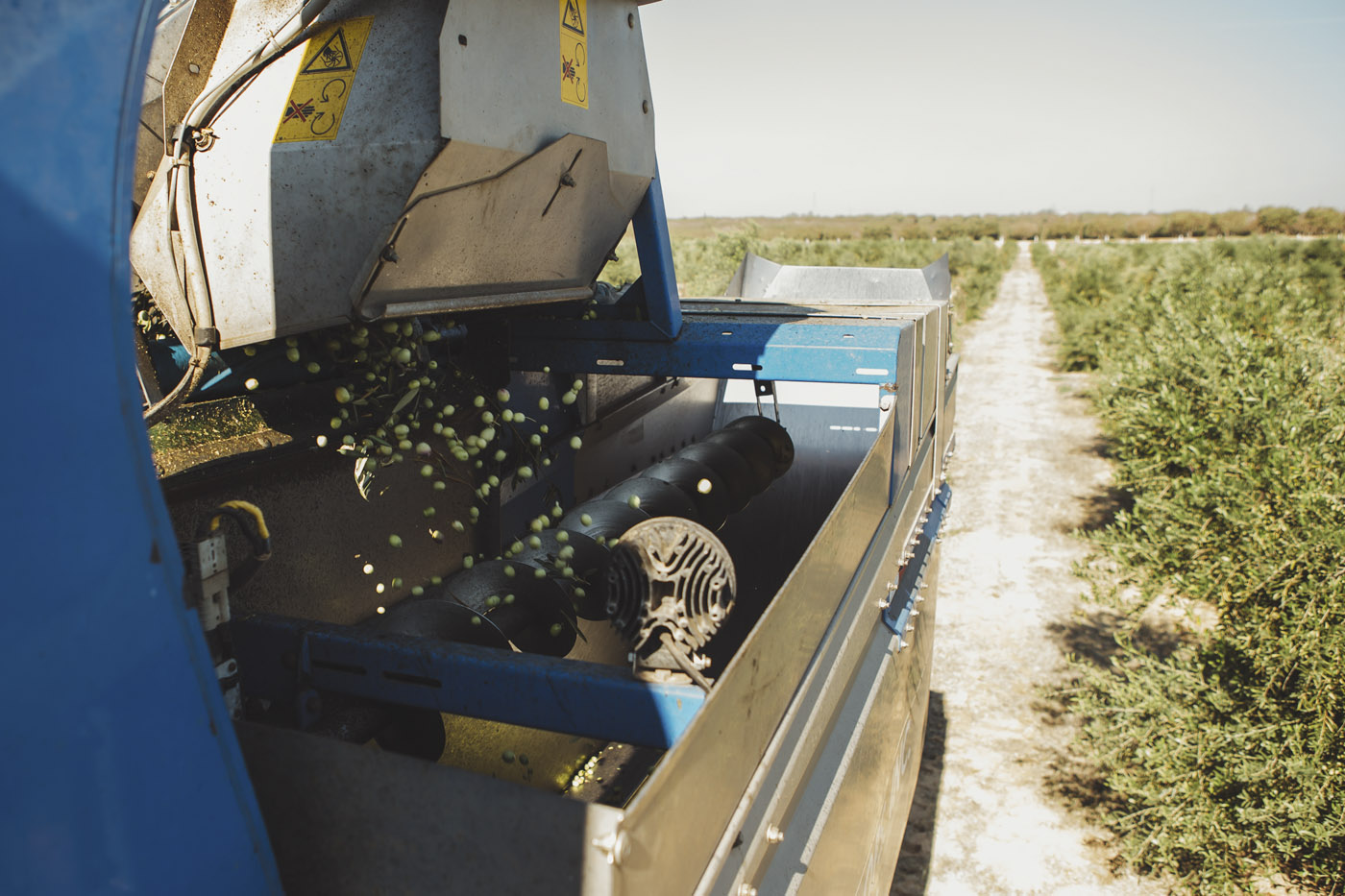
Owned by the Ricchiuti Family, the ENZO Olive Oil Company in Madera, California, is where these freshly harvested olives will complete their journey after leaving the ranch. Fourth generation farmer, Vincent Ricchiuti, is about to show me how these beautiful green gems turn into golden olive oil. As we watch bins of olives being dumped into a larger hopper, Ricchiuti delves into how the brand of ENZO Olive Oil came to be. “If there’s one thing that farmers do a really bad job of, it’s marketing themselves and their products. It’s usually just going to be white-labelled or wholesale,” says Ricchiuti. “When we started making olive oil, we decided we were going to create a brand––this awesome, organic brand––that people could trust and know that it was going to be good.”
The olives make their way up an elevator conveyor and into a washer to remove any debris, foreign material and dirt. They then head to the crusher––a hammer mill––which completely pulverizes the olives, pits and all. The newly formed paste then gets pumped into a malaxer, a machine designed to slowly raise the temperature of the olive paste in order to prepare it for the next step: separating the oil from the paste. The warmed paste makes its way into the decanter where it’s spun at 3000 RPMs, pulling apart the liquid from the solids. The latter is taken away to organic dairy farms to be used as feed for cattle. The final stage for making olive oil happens inside the vertical separator. Spinning at 7000 RPMs, water and oil divide, and the end result is olio nuovo or, “new oil.” This is the freshest extra virgin olive oil you’ll ever taste.
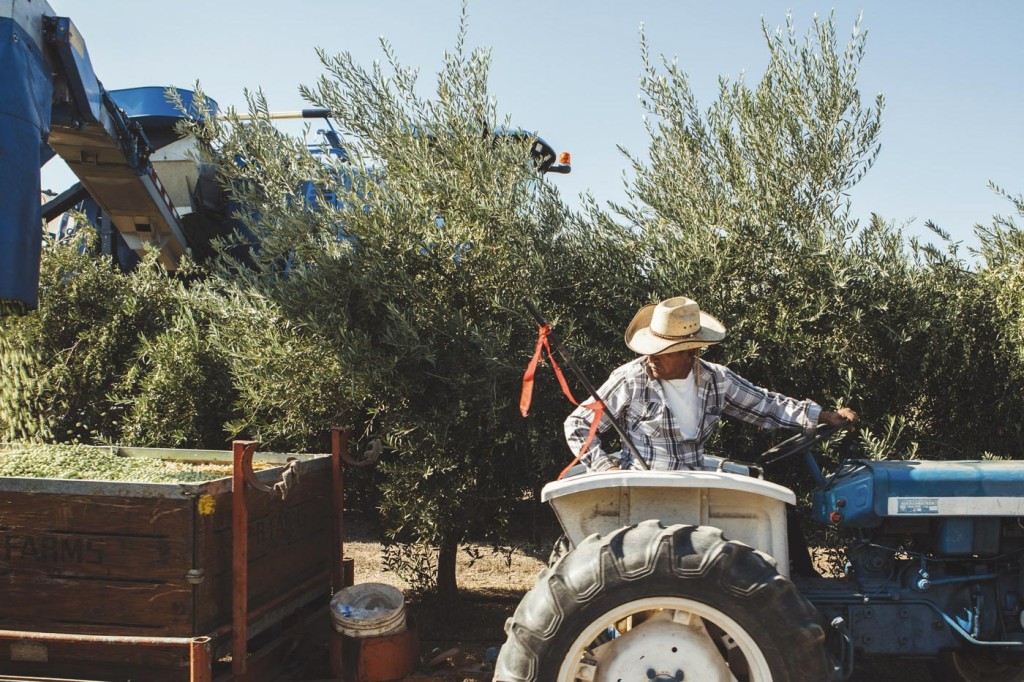
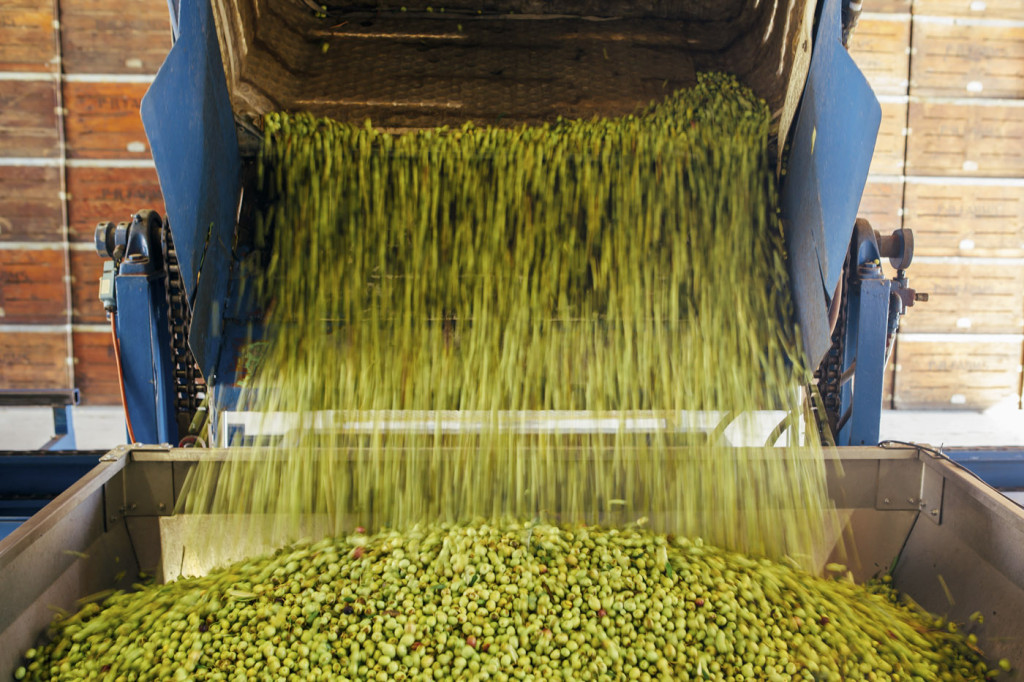
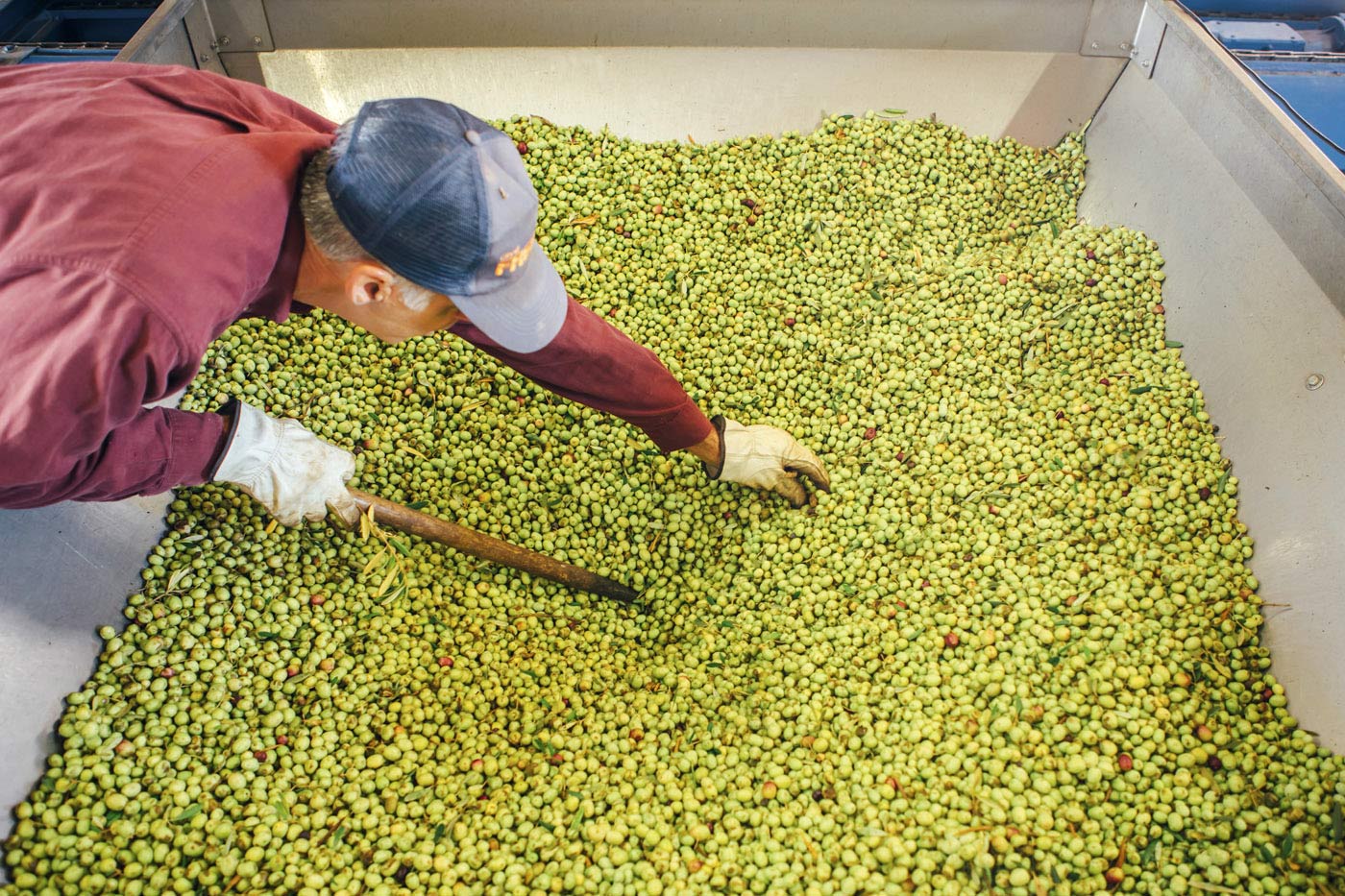
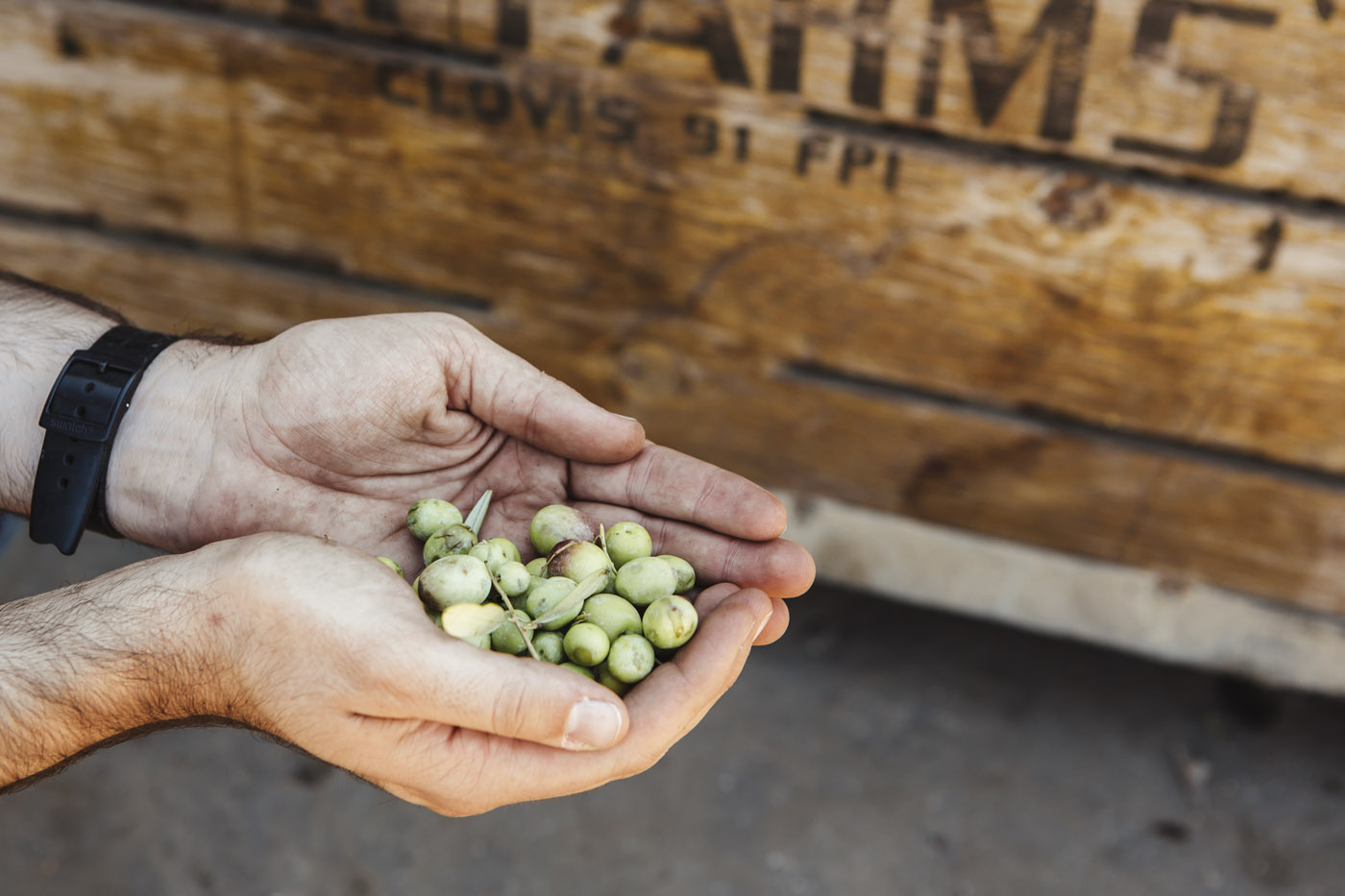
“Olio nuovo––the first milled oil of the season––is only available from harvest to Christmas. We literally just fill it off the line and it’s super cloudy, thick and delicious. We only sell for that amount of time because it can go rancid quicker, since there’s still so much sediment inside,” explains Ricchiuti. He catches some of the yellow flowing oil in a small, clear plastic cup. I’m coached through how to properly taste olive oil, sipping forcefully enough to make sure it hits the back of my throat, while also coating my entire palate. The spicy notes are surprising but common, I’m told, in freshly pressed oil.
ENZO Organic Extra Virgin Olive Oil is certified through the California Certified Organic Farmers (CCOF), whereas the California Olive Oil Council certifies the oil to be extra virgin. “They do a taste test––a sensory evaluation––to test for any defects. The definition ‘extra virgin,’ is the ‘absence of defects,’” explains Ricchiuti. “It’s the only certified taste panel in North America.” Located in Berkeley, Ricchiuti is also the council’s Vice President. “It’s a blind tasting––I’m not on the panel as producers aren’t allowed to be for obvious reasons,” assures Ricchiuti. A sample of the olive oil is also sent off to a laboratory where a chemical analysis is conducted.
The processing facility for the ENZO Olive Oil Company is also where the oil is bottled. We walk past giant, statuesque steel tanks––used to hold large quantities of olive oil––towards the bottling area. Rows of slender, green bottles are lined up next to the filling station. One worker expertly fills four green bottles simultaneously, while others are busy labelling and packing them for shipment. They all work rapidly with focus, giving me patient smiles while I interrupt their process for a few photos. Ricchiuti begins to describe why olive oil is more delicate than most of us actually know.
“Once you pick that olive, it begins to die. Every time you touch the olive or the oil, it deteriorates in quality. It’s not wine; it doesn’t get better with age. When you see it spill out of that machine, that is the best that olive oil will be. How you take care of it is very important.” Ricchiuti begins to list his no-nos when storing olive oil. “Don’t keep it on your kitchen counter––especially don’t keep it next to your stove. You want to keep it in a cool, dark place. UV light kills it, so make sure the oil is in a green bottle. Oxygen is awful for olive oil––once you crack open that bottle, you’ve introduced oxygen and the oil will start to break down a little bit faster. We are one of very few companies that are able to store our oil in stainless steel, nitrogen lined tanks––we’re injecting nitrogen into the tanks to keep that oxygen barrier. When we bottle, we shoot nitrogen into every bottle so even in there, there’s that nitrogen gap. There are little things you can do to prolong the life of the oil that not a lot of people know yet. We’re getting there.”

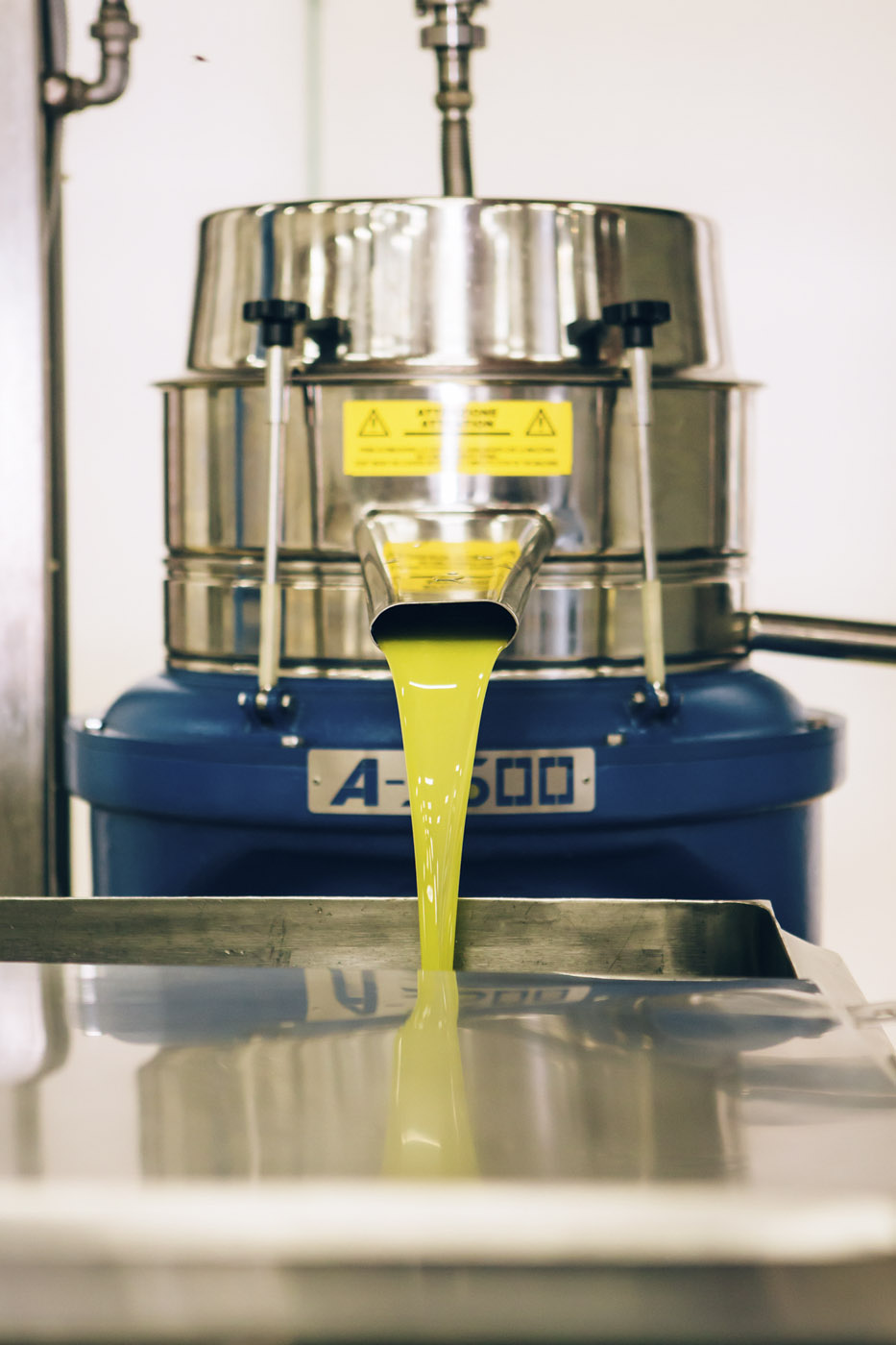
We sit down to chat further about the ENZO brand and how things have changed in recent years. “We named the olive oil company after my great grandfather, who I was named after,” explains Ricchiuti. “Enzo is the nickname for Vincenzo––what Vince is to Vincent. It looked good, sounded good, and paid homage to the lineage. If you look on the bold [olive oil] bottle, there’s an image of four gentlemen. The gentleman in the middle is my great grandfather, Vincenzo; top right is my grandfather; and bottom left is my dad. I have a great uncle in there as well. We’re really trying to tell our story.”
After winning medals at the New York International Olive Oil Competition, ENZO received some exposure thanks to the New York Times. “We’ve turned the corner in terms of popularity and getting into major retailers,” Ricchiuti says. “They’re looking for an alternative to the special of the week from Spain. People want a grassy, fruity, nutty, delicious olive oil.” Currently, there are two labels for ENZO Olive Oil: White labels are sold in grocery stores such as Publix and Whole Foods, and black labels (or, “reserve” bottles) are sold in Williams-Sonoma stores across the country.
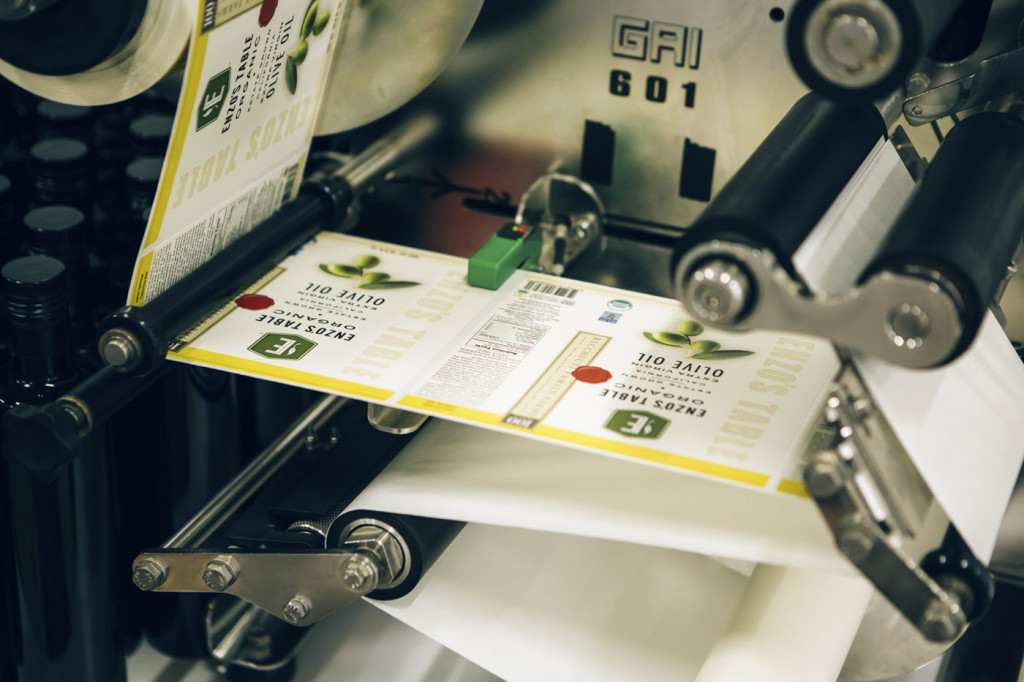

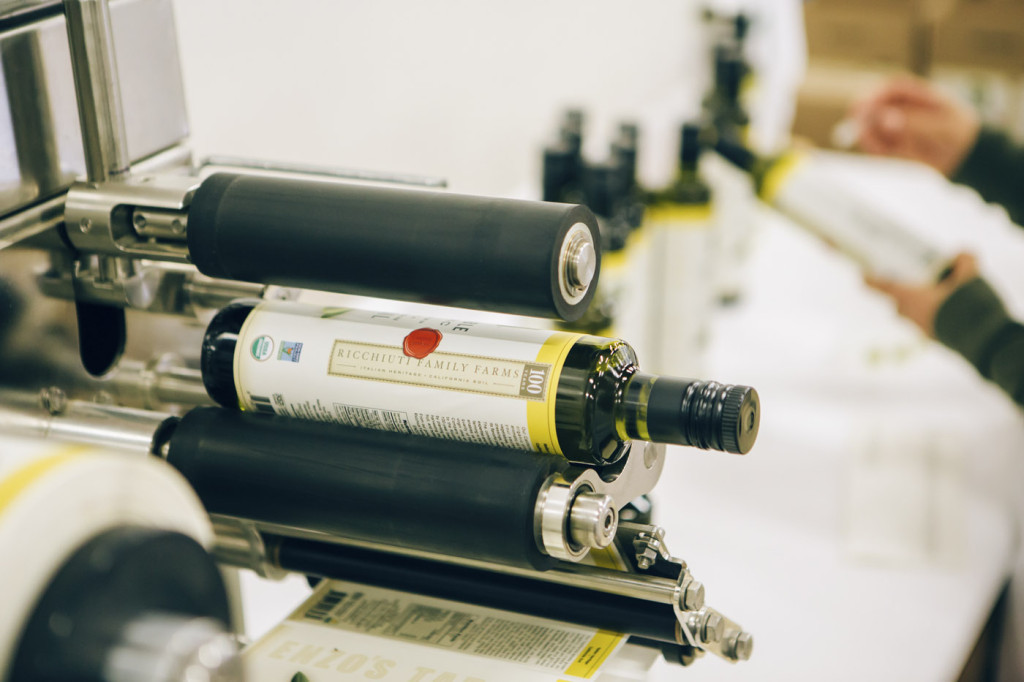
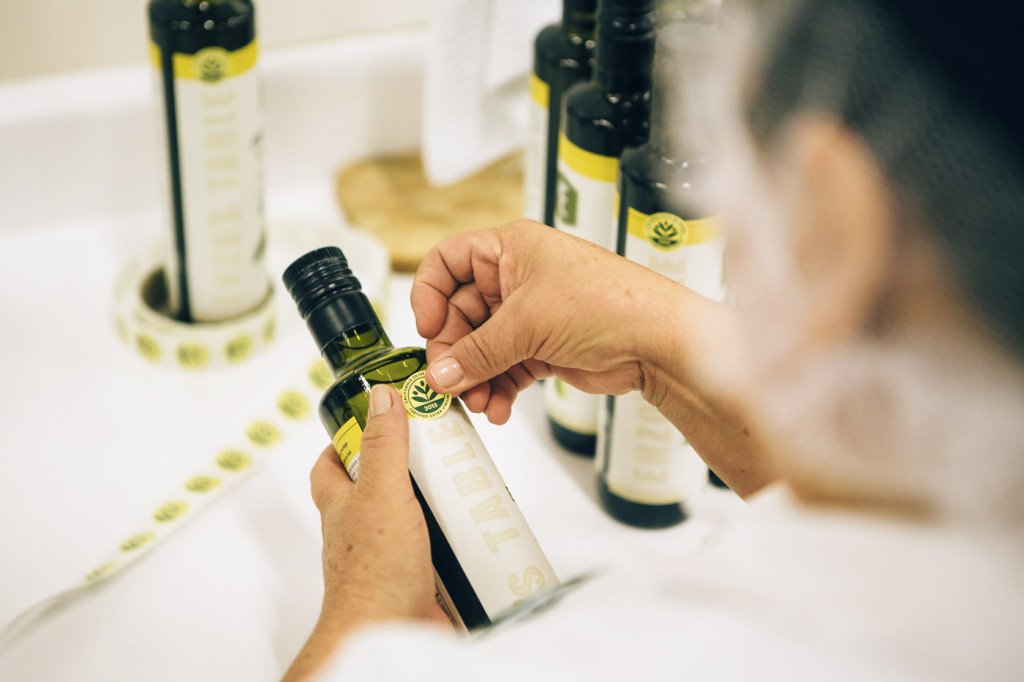
Exposing people to ENZO Olive Oil is also something Ricchiuti loves to do. He and his wife, Ashley, find opportunities to introduce their product when dining at new restaurants. “One of my favorite things to do when I travel is take a bottle of my olive oil and gift it to the chef or the kitchen,” Ricchiuti says with a smile. “My wife and I went to New York over the Christmas holiday last year, and we ate at Gramercy Tavern. We sent a bottle of olive oil back. Chef Michael Anthony comes out and we have a beautiful conversation with him. He actually used the oil in a couple of the dishes he served us that night, which is the ultimate compliment.” Some chefs, like Tyler Florence, are now using ENZO regularly in their dishes. At his restaurant in San Francisco, Wayfare Tavern, Florence has the oil listed on his menu as an ingredient, and there’s also a collaboration in the works to create a special blend of ENZO Olive Oil for Florence which would be sold at Williams-Sonoma stores.
Inside Enzo’s Table, the Ricchiuti Family store, fresh produce and nuts from Ricchiuti Family Farms are proudly displayed along with a variety of ENZO Olive Oils and other California-produced food items. But the physical store is just one portal––there’s also an online store and catalogue where consumers can purchase individual items and pre-packaged gift boxes.
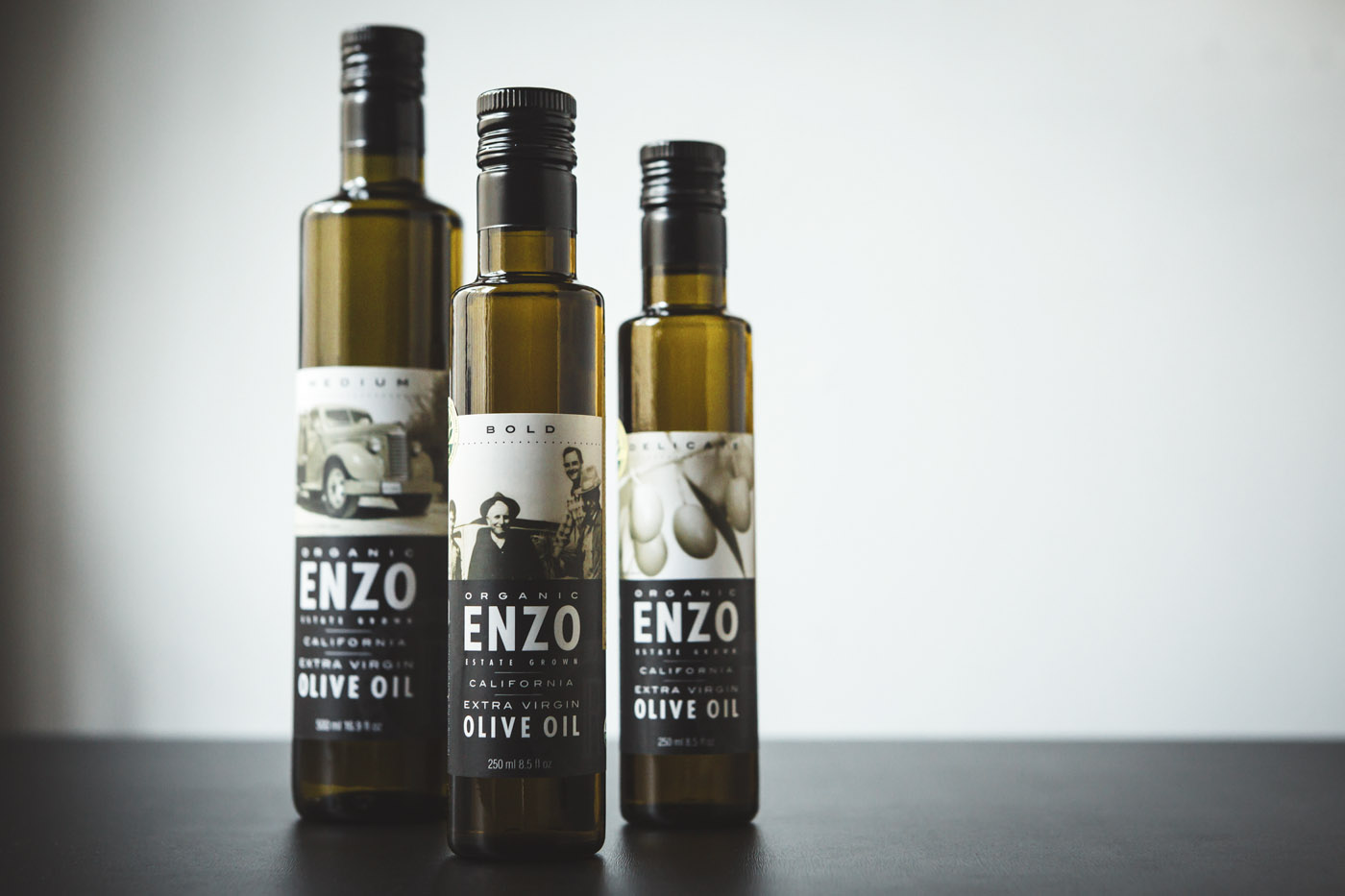
Ricchiuti begins to describe his vision for the family business. “I’d really like to become the household name for high-quality, organic extra virgin olive oil. When we started the catalogue, our goal was to be the premier California company for food gifts. When you thought of California, you thought of ENZO: Enzo’s Table or ENZO Olive Oil. A lot of people, they live in California or they used to live in California, and during the holidays or special occasions, they want to share California with their family, friends or colleagues. We didn’t think there was a company doing farm-to-gift in California very well, so we saw the possibility to fit into that space. People could share California’s bounty across the country. That’s what we’re really trying to grow.”
—
Enzo’s Table
1959 N Willow Ave, Clovis, California 93619
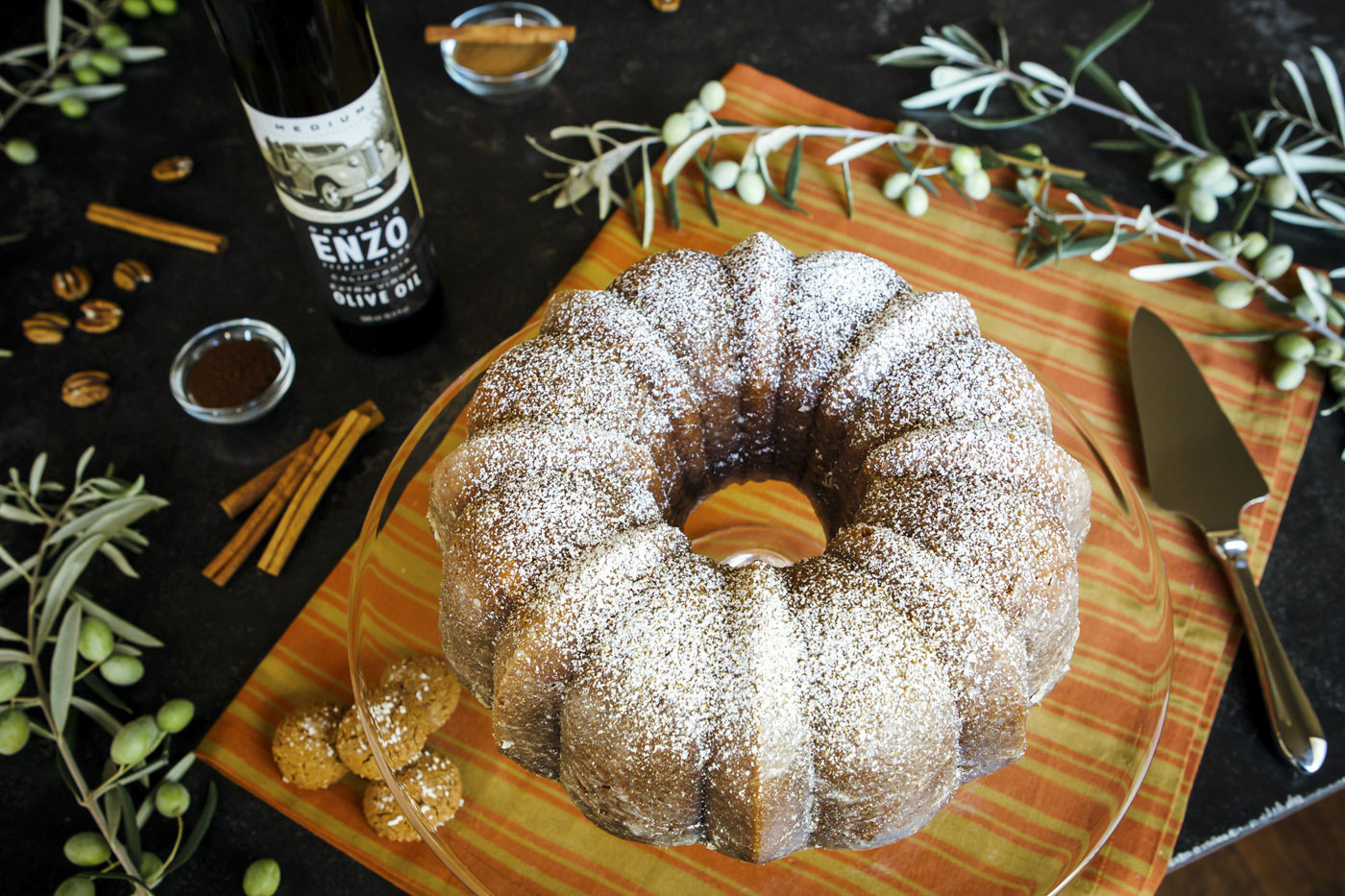
Butternut Squash Olive Oil Cake with Amaretti Cookie Glaze
By: Ashley Ricchiuti
Yield: 10 servings
Ingredients:
The Cake
- 1 cup pecans, finely chopped
- 2 cups unbleached all-purpose flour
- 1 teaspoon baking powder
- ½ teaspoon baking soda
- 1 teaspoon kosher salt
- 2 teaspoons ground cinnamon
- ½ teaspoon nutmeg
- ½ teaspoon ground cloves
- 3 large eggs, separated
- 2 cups pureed butternut squash
- 1 ¾ cups granulated sugar
- 1 cup ENZO Organic extra-virgin olive oil
- 1 teaspoon vanilla extract
- Confectioner’s sugar, for dusting
The Amaretti Cookie Glaze
- 1/3 cup granulated sugar
- 1 cup confectioner’s sugar
- 3 tablespoons plus 1 teaspoon cold water
- 2 teaspoons vanilla extract
- 2-3 amaretti cookies
Method:
Butternut Squash Puree:
Preheat the oven to 350 degrees F. Slice the squash into quarters and place in a roasting pan. Cover the bottom of the pan with water and cover the pan with foil.
Place the pan in the oven for 1.5 to 2 hours or until the squash is soft enough to place a fork completely through. Remove the squash from the oven and allow to cool. Scoop out the squash from the skin and puree the squash until smooth.
Cake:
Preheat the oven to 350 degrees F and position rack in the center. Grease a 10 cup bundt pan using nonstick cooking spray or butter, then dust it with flour to coat it completely, tapping out any excess flour.
Sift the flour, baking powder, baking soda, salt and spices into a medium bowl and set aside. In an electric mixer fitted with the whisk attachment, whisk the egg whites until they form a peak and set aside.
In an electric mixer fitted with the paddle attachment, beat the egg yolks, sugar and olive oil together on medium speed until light and fluffy, about 3 minutes. Beat in the vanilla extract, and then mix in the butternut squash puree.
Scrape down the sides of the bowl with a spatula after each addition. Beat in the dry ingredients all at once on low speed until they are thoroughly combined, then switch the mixer to medium speed and mix for 30 seconds. Beat in the pecans on low speed until they are completely incorporated, scrape down the sides of the bowl.
Remove the bowl from the mixer and remove the paddle attachment. With a spatula, fold the egg whites into the mixture.
Pour the batter into the prepared pan, smoothing the top with a spatula. Bake the cake for 45 to 50 minutes, rotating the pan halfway through the baking time to ensure even browning. The cake is done when a tester inserted in the center comes out clean, and the cake has begun to pull away from the sides of the pan.
While the cake is baking, prepare the glaze.
In a medium bowl, whisk together the cold water, vanilla extract and granulated sugar, then mix in the confectioners’ sugar until the glaze is completely smooth.
Allow the cake to cool in the pan for 10 minutes, then carefully invert it onto a wire rack.
Using a pastry brush, immediately brush the glaze over the entire surface of the warm cake, using all of the glaze; it will adhere to the cake and set as the cake cools. Immediately after all the glaze is brushed on, shave amaretti cookies on top of the glaze; the cookies will stick to the glaze as it cools on the cake.
Allow the cake to cool completely and the glaze to dry completely. Transfer the cake to a stand or serving plate and, if desired, lightly dust it with confectioner’s sugar. Any leftover cake may be wrapped in plastic and served the following day.

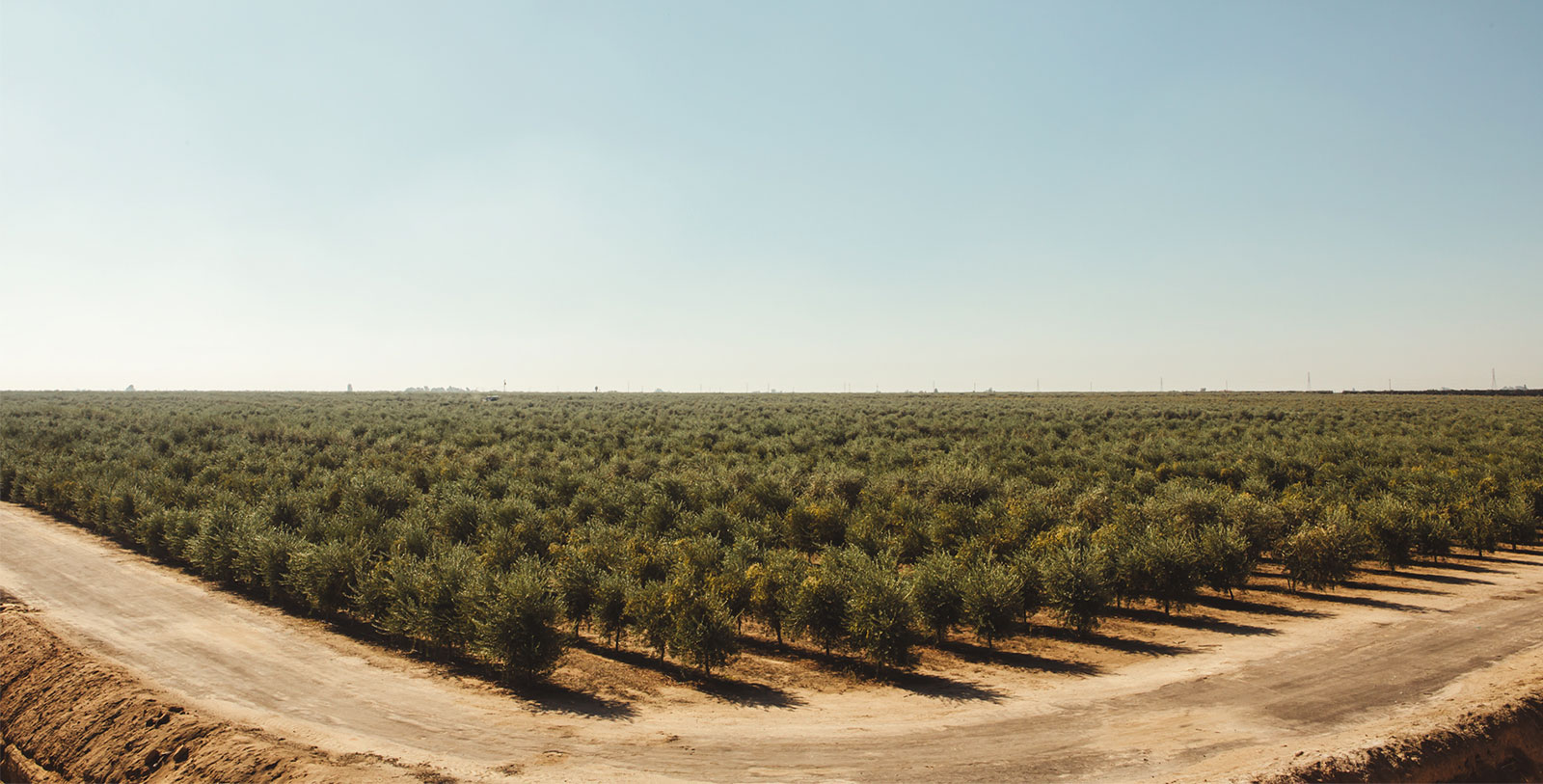

Our comments section is for members only.
Join today to gain exclusive access.